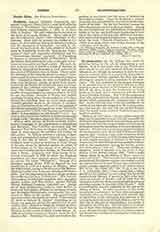

Co-consecrators are the bishops who assist the presiding bishop in the act of consecrating a new bishop. It is a very strict rule of the Church that there should be two such assistant bishops, or three bishops in all—though an exception is made for missionary countries where it is practically impossible to bring so many bishops together, the Holy See there allowing two priests to act as assistants to the consecrator. The part assigned by the Roman Pontifical in its present form to the assistant bishops is, after helping to place the book of the Gospels on the shoulders of the elect, to join the consecrator in laying hands on his head, and in saying over him the words Accipe Spiritum Sanctum. But it is the consecrator alone who, with extended hands, says the Eucharistic prayer, which constitutes the “essential form” of the rite. In the Oriental rites, Uniat and schismatic, no words of any kind are assigned to the assistant bishops; this was also the case with the ancient Western rites, the words Accipe Spiritum Sanctum being a late medieval addition.
HISTORY OF THE USAGE.—In the earliest times the ideal was to assemble as many bishops as possible for the election and consecration of a new bishop, and it became the rule that the comprovincials at least should participate under the presidency of the metropolitan or primate. But this was found impracticable in a matter of such frequency; so in the Council of Nicaea we find it enacted that “a bishop ought to be chosen by all the bishops of his province, but if that is impossible because of some urgent necessity, or because of the length of the journey, let three bishops at least assemble and proceed to the consecration, having the written permission of the absent” (can. iv). There was, indeed, one exception, which is referred to in the letter of Pope Siricius to the African bishops (386), “That a single bishop, unless he be the Bishop of Rome, must not ordain a bishop”. This exception has long since been discontinued, but it bears witness to the reason for which the intervention of several bishops was ordinarily required, a reason expressly stated by St. Isidore (about 601) in his “De Eccles. Off.” (Bk. II, ch. v, no. 11 in P.L., LXXXIII, 785): “[The custom] that a bishop should not be ordained by one bishop, but by all the comprovincial bishops, is known to have been instituted on account of heresies, and in order that the tyrannical authority of one person should not attempt anything contrary to the faith of the Church.” Such a consideration was not applicable to the case of the Bishop of Rome. In these provisions of the earlier councils the conditions of the time were presupposed. Gradually other conditions supervened, and the right of appointing to the episcopate was reserved to the metropolitans in the ease of simple bishops, and to the Holy See in the case of metropolitans, and finally in all cases to the Holy See. But the practice of requiring at least three bishops for the consecration ceremony, though no longer needed for its ancient purpose. has always been retained as befitting the solemnity of the occasion.
THE MODE OF THEIR CO-OPERATION.—The question has been raised, Do the co-consecrators equally with the consecrator impart the sacramental gift to the candidate? That they do has been contended on the ground of a well-known passage in Martene’s “De Antiquis Ecclesiae Ritibus” (II, viii, art. 10), in which he says that “beyond the possibility of a doubt they are not witnesses only but cooperators.” But Martene’s reference to Ferrandus’s “Breviatio Canonum” (P.L., LXVII, 948), and through Ferrandus to the decree of Nicaea and the words of St. Isidore already quoted, shows that his meaning is that they are not mere witnesses to the fact that the consecration has taken place, but, by taking part in it, make themselves responsible for its taking place. Moreover, though Gasparri (De Sacra Ordinatione, II, 265) thinks otherwise, it is not easy to see how the assistant bishops can be said to comply with the essentials of a sacramental administration. They certainly do not in the use of the Oriental rites, nor did they in the use of the ancient Western rite, for they pronounced no words which partook of the nature of an essential form. And, though in the modern rite they say the words Accipe Spiritum Sanctum, which approximate to the requirements of such a form, it is not conceivable that the Church by receiving these words into her rite wished to transfer the office of essential form from the still-persisting Eucharistic Preface, which had held it previously and was perfectly definite, to new words which by themselves are altogether indefinite.
SYDNEY F. SMITH

